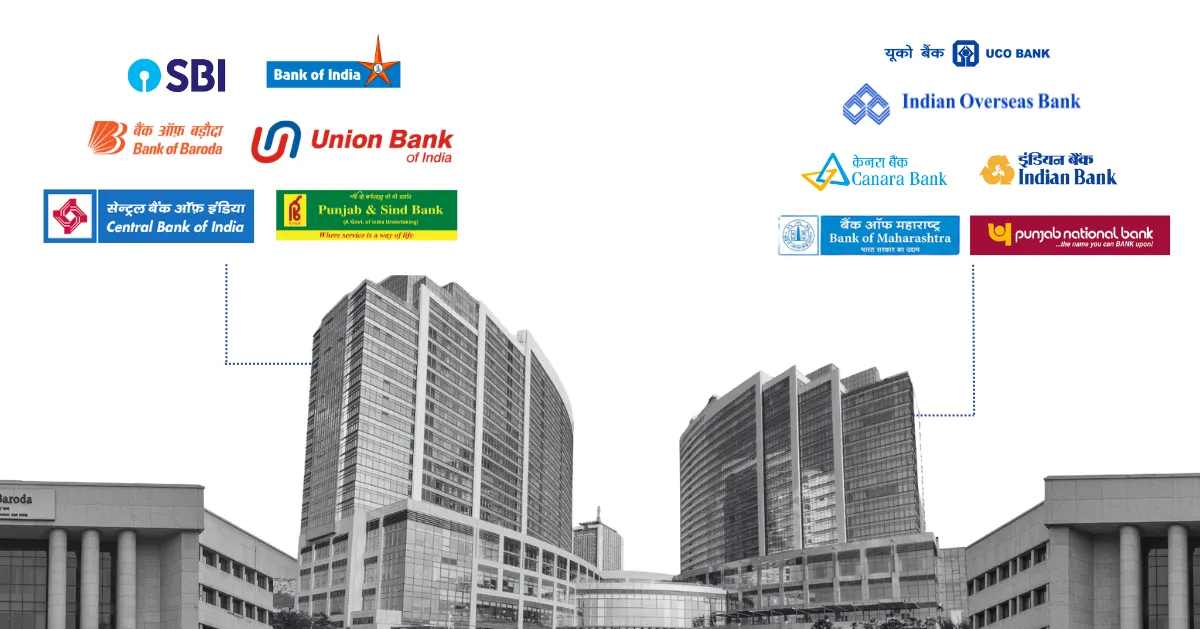
Introduction
The banking sector plays an indispensable role in maintaining the financial health and stability of any economy. One of the key mechanisms used to ensure liquidity, safeguard the financial system, and regulate credit growth is the Statutory Liquidity Ratio (SLR). SLR mandates that banks maintain a specific percentage of their net demand and time liabilities (NDTL) in the form of liquid assets, such as cash, gold, and government-approved securities.
This regulatory measure, set by the Reserve Bank of India (RBI), serves a dual purpose maintaining sufficient liquidity within banks to meet financial obligations and controlling the amount of credit circulating within the economy. For investors, businesses, and financial institutions, understanding SLR is crucial because it influences not only the lending capacity of banks but also overall economic stability and liquidity ratios in the banking system.
In this blog, we will explore in detail the Statutory Liquidity Ratio (SLR), its importance, impact on the banking sector, and the financial health of the economy. We will also look at recent changes in SLR policies and provide practical examples to enhance understanding.
What is Statutory Liquidity Ratio (SLR)?
The Statutory Liquidity Ratio (SLR) is a regulation set by the RBI that mandates commercial banks to maintain a certain percentage of their Net Demand and Time Liabilities (NDTL) in the form of liquid assets. These liquid assets primarily include:
- Cash: Though most banks hold this in reserve with the RBI.
- Gold: A traditional but valuable form of asset.
- Government-approved securities: Such as Treasury Bills, Government Securities (G-Secs), and Bonds.
The key purpose of SLR is to ensure that banks are capable of meeting sudden demands from depositors without facing liquidity crises. It also plays a pivotal role in controlling credit expansion, as banks have limited funds to lend when SLR is high. For instance, if the RBI mandates an SLR of 18%, then banks must keep 18% of their NDTL in liquid assets and are free to lend the remaining 82%.
Importance of Statutory Liquidity Ratio (SLR) in Banking and Financial Stability
SLR plays an integral role in ensuring the financial health of the banking system, directly impacting both liquidity ratio and credit expansion. Here’s why SLR is significant:
- Ensuring Liquidity:
By requiring banks to hold a portion of their funds in liquid assets, SLR helps maintain sufficient reserves to meet depositors’ demands. This reduces the risk of bank runs and liquidity crises, safeguarding public trust in the financial system. - Regulating Credit Growth:
A higher SLR reduces the amount of money banks have available to lend, which in turn helps regulate credit growth. This controls inflationary pressures, as excessive credit expansion can lead to overheating of the economy. - Preventing Bank Failures:
SLR acts as a buffer in case of financial crises. Banks that are required to hold a certain portion of liquid assets are better equipped to weather financial storms without collapsing. - Ensuring Financial Stability:
A well-maintained SLR ensures that the banking system remains stable, contributing to the overall economic growth and stability by providing banks with enough liquidity to operate smoothly.
SLR Requirements as per RBI Regulations
The Reserve Bank of India (RBI) sets the SLR requirements for all scheduled commercial banks operating in India. These regulations are updated periodically based on the prevailing economic conditions to balance growth and inflation.
- SLR for Scheduled Commercial Banks:
All commercial banks are mandated to maintain SLR at a prescribed percentage of their NDTL. - Current SLR Requirement:
As per the latest RBI regulations, SLR is currently set at 18% of the total NDTL. This means that banks must hold 18% of their deposits in the form of liquid assets. - Compliance Monitoring:
Banks are required to maintain the SLR on a daily basis. Any failure to comply with SLR can result in penalties or other regulatory actions by the RBI.
How SLR Impacts Lending and Interest Rates?
The Statutory Liquidity Ratio (SLR) directly influences the banking sector, particularly in terms of liquidity ratio, lending capacity, and interest rates. Here’s how:
- Impact on Lending Capacity:
A higher SLR means that banks must keep more of their funds in liquid form, leaving them with fewer resources to lend. This restricts credit availability and tightens lending conditions in the economy. Conversely, when the SLR is lower, banks can lend more money, promoting liquidity in the system. - Influence on Interest Rates:
- Higher SLR → Lower Lending Capacity → Higher Interest Rates
- Lower SLR → Higher Lending Capacity → Lower Interest Rates
The RBI adjusts SLR to maintain a balance between credit growth and inflation, ensuring economic stability.
Difference Between Statutory Liquidity Ratio (SLR) and Cash Reserve Ratio (CRR)
Both SLR and CRR are important banking regulations that help manage liquidity in the economy. However, they have distinct functions:
| Feature | Statutory Liquidity Ratio (SLR) | Cash Reserve Ratio (CRR) |
| Purpose | Ensures banks have liquid assets | Controls liquidity in the economy |
| Form of Reserve | Cash, Gold, Government Securities | Only cash |
| Held With | Banks themselves | RBI |
| Interest Earned | Yes, on government securities | No interest on CRR reserves |
| Impact on Lending | Affects lending capacity indirectly | Directly impacts liquidity in banking |
While SLR allows banks to hold liquid assets, CRR directly impacts the reserve amount banks must maintain with the RBI, limiting their lending capacity.
Recent Changes in SLR Policies in India
The Statutory Liquidity Ratio Requirement in India has evolved over time to align with economic growth objectives and to address changing market dynamics. Some significant changes include:
- 2015: SLR was reduced from 22% to 21.5% to promote economic liquidity.
- 2017-2019: Further reductions brought the SLR to 18%, allowing banks to lend more.
- 2020 (COVID-19 Impact): The RBI temporarily eased SLR requirements to provide more liquidity during the pandemic.
- Present Day: The SLR remains at 18%, balancing stability and credit growth.
These policy changes directly affect financial health, banking regulations, and overall economic conditions, ensuring the banking sector remains resilient and capable of responding to market needs.
Common Mistakes to Avoid When Managing Statutory Liquidity Ratio
- Ignoring Changes in SLR Requirements:
Failing to keep track of RBI updates can result in non-compliance, leading to penalties. - Underestimating the Impact on Lending:
SLR has a direct influence on the available funds for lending. Misunderstanding its impact can lead to incorrect financial planning. - Over-allocating Liquidity:
Excessive allocation towards liquid assets can reduce profitability, as banks cannot lend the funds. - Failing to Optimize SLR Holdings:
Not investing SLR reserves in government securities or other RBI-approved assets may lead to lost opportunities for earning interest.
Conclusion
The Statutory Liquidity Ratio (SLR) is a cornerstone of banking regulations that ensures banks maintain sufficient reserves to meet financial obligations and control inflation. It plays a vital role in safeguarding the financial health of banks and stabilizing the overall economy. For businesses and investors, understanding SLR is critical to making informed financial decisions.
SLR directly influences the banking sector, liquidity ratio, lending capacity, and interest rates, ultimately affecting economic growth. By keeping up with changes in SLR policies and understanding how it works, businesses can better navigate the financial landscape and mitigate risks.
Why Choose RegisterKaro for Your Banking and Financial Compliance Needs?
At RegisterKaro, we specialize in providing expert guidance on banking regulations, SLR compliance, and financial health. Our team is committed to helping businesses stay compliant with the latest financial regulations, ensuring smooth operations and optimal profitability.
Contact Us Today:
Email: support@registerkaro.in
Call: +918447746183
Frequently Asked Questions (FAQs)
- How does SLR help in controlling inflation?
- Statutory Liquidity Ratio restricts the amount of money banks can lend, reducing excess liquidity in the economy and thereby controlling inflation.
- Statutory Liquidity Ratio restricts the amount of money banks can lend, reducing excess liquidity in the economy and thereby controlling inflation.
- What happens if a bank fails to maintain the required SLR?
- The RBI may impose penalties, fines, and restrictions on the bank’s lending activities.
- The RBI may impose penalties, fines, and restrictions on the bank’s lending activities.
- Can banks use SLR reserves for investments?
- Yes, banks can invest their SLR reserves in government securities and other approved financial assets to earn interest.
- Yes, banks can invest their SLR reserves in government securities and other approved financial assets to earn interest.
- Does SLR apply to all financial institutions?
- SLR applies only to scheduled commercial banks, not to non-banking financial companies (NBFCs) or cooperative banks unless specifically mandated.
- SLR applies only to scheduled commercial banks, not to non-banking financial companies (NBFCs) or cooperative banks unless specifically mandated.
- How frequently does the RBI change the SLR rate?
- The RBI reviews the SLR periodically based on economic conditions and adjusts the rate accordingly.
- The RBI reviews the SLR periodically based on economic conditions and adjusts the rate accordingly.
- Can SLR be reduced to zero?
- No, SLR cannot be reduced to zero as it is a key regulatory tool to ensure financial stability.
- No, SLR cannot be reduced to zero as it is a key regulatory tool to ensure financial stability.
- What assets qualify as SLR?
- SLR assets include cash, gold, and government-approved securities such as Treasury Bills and Bonds.
- SLR assets include cash, gold, and government-approved securities such as Treasury Bills and Bonds.
- How does SLR impact lending rates?
- A higher SLR restricts banks’ lending capacity, leading to higher interest rates. A lower SLR allows for more lending and potentially lower interest rates.
- A higher SLR restricts banks’ lending capacity, leading to higher interest rates. A lower SLR allows for more lending and potentially lower interest rates.
- Is SLR only relevant in India?
- While SLR is specific to India, other countries have similar regulations to ensure liquidity in their banking systems.
- While SLR is specific to India, other countries have similar regulations to ensure liquidity in their banking systems.
- What is the role of the RBI in regulating SLR?
The RBI sets the SLR rate, monitors compliance, and makes adjustments based on economic conditions to maintain financial stability.




